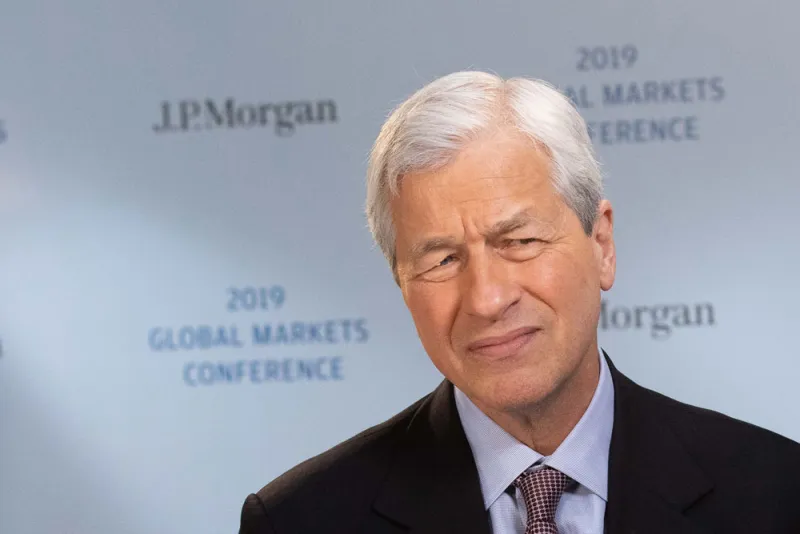Shadow banking needs more regulatory attention as lending beyond Wall Street has picked up over the past decade, according to JPMorgan Chase & Co.’s chief executive officer Jamie Dimon.
Lenders operating outside banking regulation should be carefully monitored to ensure the safety of the financial system, Dimon wrote in his 2018 annual letter to JPMorgan shareholders. He expressed concern that firms engaged in shadow banking may pull back from lending in tough economic times, leaving borrowers “stranded.”
Since the passage of the Dodd-Frank Act — Wall Street regulation signed into law in 2010 to help prevent another financial crisis — private debt funds have increasingly replaced banks as direct lenders to mid-sized companies. Dimon said regulation of the financial industry now needs “recalibration,” partly to pay closer attention to the rise in shadow banking since the 2008 crisis.
“The growth in non-bank mortgage lending, student lending, leveraged lending and some consumer lending is accelerating and needs to be assiduously monitored,” Dimon wrote in his letter. While calling for oversight, he said JPMorgan does not believe “the rise in non-banks and shadow banking has reached the point of systemic risk.”
The growth of direct lending funds can be seen in the private equity industry.
Shadow banking topped lending activity for private equity-backed borrowers last year, according to PitchBook. The five most active lenders for U.S. buyouts in 2018 were asset managers, data from the firm show.
The expansion of shadow banking is expected to continue, with Preqin estimating in a report last month that private debt assets will double to about $1.4 trillion within the next five years.
“We estimate that approximately $500 billion of direct loans are owned exclusively by non-banks,” Dimon wrote in his letter to shareholders. “Leveraged lending is increasing, particularly through shadow banks.”
The JPMorgan chief pegged the U.S. leveraged loan market, including direct lending funds and riskier loans that Wall Street banks sell to institutional investors, at $2.3 trillion. About 25 percent of the leveraged loans are owned by banks, with the balance held by non-banks, according to his letter.
Some investors have worried that a search for yield in risky loans and bonds, including those funding large leveraged buyouts, could spell trouble in the next downturn.
[II Deep Dive: When Buyout Firms Step in, Watch Out]
Leveraged lending is “a growing issue,” Dimon said, but at this point, JPMorgan doesn’t see the market causing systemic problems in the financial system.
“This does not mean it won’t create some issues,” he wrote. “When things get bad, invariably prices drop dramatically, certain types of high-yield debt cannot be refinanced, etc.”







